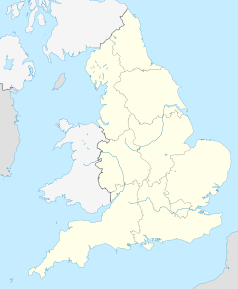Beeston with Bittering
| ||
(c) Evelyn Simak, CC BY-SA 2.0 | ||
| Państwo | ||
| Kraj | ||
| Hrabstwo | Norfolk | |
| Dystrykt | Breckland | |
| Populacja (2001) • liczba ludności | 505 (2001 census[1]) | |
| Kod pocztowy | PE32 | |
Położenie na mapie Norfolku Contains Ordnance Survey data © Crown copyright and database right, CC BY-SA 3.0 | ||
Położenie na mapie Wielkiej Brytanii (c) Karte: NordNordWest, Lizenz: Creative Commons by-sa-3.0 de | ||
| Portal | ||
Beeston with Bittering – civil parish w Anglii, w hrabstwie Norfolk, w dystrykcie Breckland. Leży 33 km na zachód od miasta Norwich i 150 km na północny wschód od Londynu[2]. W 2001 miejscowość liczyła 505 mieszkańców[1].
Przypisy
- ↑ a b Census population and household counts for unparished urban areas and all parishes. Office for National Statistics & Norfolk County Council (2001). Retrieved 20 June 2009.
- ↑ Beeston with Bittering na mapie (ang.). getamap.ordnancesurvey.co.uk. [dostęp 2010-10-06].
Media użyte na tej stronie
(c) Karte: NordNordWest, Lizenz: Creative Commons by-sa-3.0 de
Location map of the United Kingdom
Flag of England. Saint George's cross (a red cross on a white background), used as the Flag of England, the Italian city of Genoa and various other places.
Contains Ordnance Survey data © Crown copyright and database right, CC BY-SA 3.0
Map of Norfolk, UK with the following information shown:
- Administrative borders
- Coastline, lakes and rivers
- Roads and railways
- Urban areas
Equirectangular map projection on WGS 84 datum, with N/S stretched 160%
Geographic limits:
- West: 0.12E
- East: 2.00E
- North: 53.05N
- South: 52.32N
(c) Evelyn Simak, CC BY-SA 2.0
Sand and gravel extraction site. By Salters Lane. This gravel extraction site extends all the way along Salters Lane > 923914 until it meets Reed Lane > 923955 further to the east. Signs put up by the entrances warn that this site is not a play area > 923934. This area forms part of what used to be the parish of Launditch. Launditch (the original spelling is Launditcth) is described in White's History, Gazetteer and Directory of Norfolk (1845) as being "of an irregular, quadrangular figure, averaging about 12 miles in length and breadth, and bounded on the north by Gallow, on the east by Eynesford, on the south by Mitford and South Greenhoe, and on the west by Freebridge-Lynn Hundred. It is a highly cultivated district, rising in some places in bold and picturesque swells, with many thriving plantations and handsome mansions, and watered by the Wensum, the Nar, and several smaller streams, which rise within its limits. It takes its name from a long ditch and bank extending from Wendling-car to the low lands near Mileham, and supposed to have been made for the purpose of carrying off the drain water. At the point where this ditch crosses the Norwich road, the Hundred court was anciently held. Launditch, (with the exception of Colkirk and Hoe) forms the Deanery of Brisley, in the Archdeaconry of Norwich."









